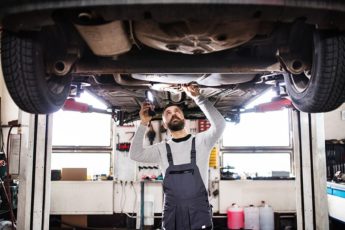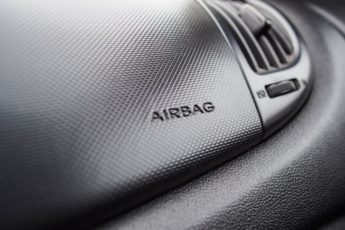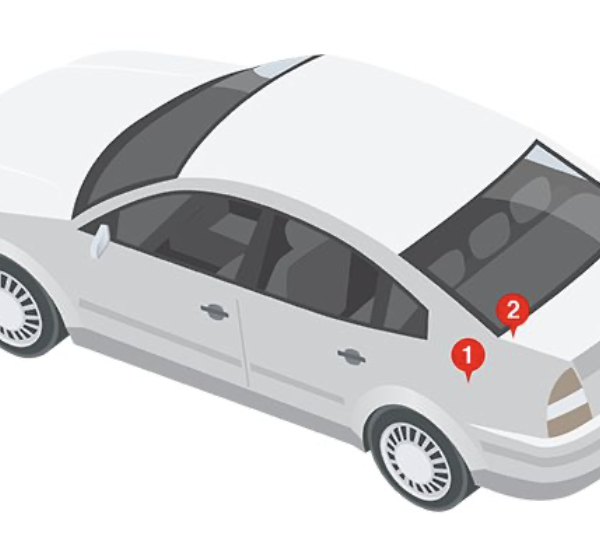Rustproofing Tips

For us humans, signs of aging include stiff joints and the inability to remember where we put our car keys. For cars and trucks, rust is one of the main indicators. The good news is that there are steps you can take to keep your beloved vehicle from succumbing to the effects of oxidation.
Common Causes Of Rust
Unless your automobile remains pristine in your garage, it is sure to become a victim of the three main causes of rust. Precipitation is the main culprit since it causes water to fall on your vehicle’s surface. That can lead to oxidation. If your finish features scratches or dings, these openings become gateways into which the rust can go, infiltrating your bodywork and ultimately causing a great deal of damage.
Geographical factors can also exacerbate the rusting process. For instance, exposing your vehicle to excessively damp and salty seaside conditions, extreme heat or winter environments where you will be driving on treated roads are all lifestyles that can foster serious rust damage to your vehicle.
Finally, neglect can play a major role in this type of deterioration. Failing to wash and wax your car on a regular basis or to maintain your vehicle’s paint job can leave the finish vulnerable to attack by rust. These may seem like insignificant tasks, but making them a regular part of your car care regimen can extend its life and enhance its long-term appearance.
Defend The Exterior
Rust may be virtually inevitable, but it can be minimized even if not prevented altogether. The first step in this multipronged approach involves protecting your vehicle’s exterior finish, otherwise known as your paint job. Why is this vital? Think of rust as the chemical equivalent to water damage. If you allow holes or openings to form in the dam of your car’s paint, oxidation will happen just as surely as water will breach your compromised fortifications.
To enhance the lifespan of your paint, one option is to touch it up. Some companies offer to touch up paint with a color match guarantee, a promise that ensures your ability to make virtually invisible repairs in the exact shade your vehicle sported when it left the assembly line. Depending on the extent of the surface you wish to rehabilitate, you will want to choose one of three paint options:
Regardless of which touch up paint with a color match guarantee you use, it is crucial that you first apply it on the test card that is provided. Another option that you can use instead of paint is a solution dedicated to neutralizing existing rust and preventing appearances of it in the future. Ask your mechanic or local auto parts store to recommend the option that would be best for your particular car or truck.
Close The Seams
When your car left the factory, the seams between its various parts were locked up tight with a seam-sealing substance. With the passage of time, it needs to be reapplied in order to keep corrosion from creeping between those tiny spaces. Definitely, after a couple of decades of life, your car’s seams need to be scraped free of the old solution. Reapply a generous new coat over crimps, welds, and seams.
Safeguard Your Undercoat With Rubberized Spray
As we have mentioned before, sea and road salt can wreak havoc on the underside of your vehicle. Although it isn’t always easy to spot unless you’re looking for it, the damage can be both real and catastrophic. Rubber undercoat spray is best applied after you have finished putting on a new coat of paint and seam sealer, often behind the wheels and underpan. The advantage of this type of spray is that, once it dries, it provides a hard, protective coating against the infringement of salt. However, it can be easily breached by objects such as rocks. The moral of the story is that while it can be a useful preventive tool against rust, you should check frequently to ensure that the integrity of the surface is intact.
Choose A Polyurethane-based Sealant
This is another option if you prefer not to use rubberized undercoating spray. Generally, this substance is bought in canisters that you can easily load into an application gun. Upon applying it, this solution readily seeps into all of the spaces and seams in your car’s undercarriage. AASs a result, any moisture or salt that is lodged in these crevices is displaced. This substance also adheres to any metal surfaces that are currently free from rust and serves to protect them. The polyurethane undercoating can be easily sanded off if you need to remove it, and you can paint over it without difficulty. However, you will probably need to do more work preparing the surface via sanding and applying primer. The choice is yours.
Select A Paraffin-based Undercoating
The easiest and cheapest of all to apply is a paraffin-based undercoating. That being said, it is important to note that you will need to reapply it every year.
Tips To Apply Undercoating
Regardless of which type you prefer, there are things you can do to ensure that your DIY undercoat application goes smoothly:
Oil It Up
Take advantage of a fact that sheep and seals have known since the dawn of time: Oil repels. In the case of these land and sea animals, it keeps the cold out. For your car, non-drying wax and oil undercoats provide lasting protection that is self-sealing. Use an undercoating gun, aerosol sprayer or sprayer-tipped hose to protect all of your car’s nooks and crannies.
Give Your Car A Good Old-fashioned Bath
The irony when it comes to rust is that water, while it is certainly an integral element in oxidation, can actually also be one of your best allies in fighting it. Even during the depths of winter when it seems like washing your car is an exercise in futility, giving it a regular bath can remove most of the potentially damaging salt and road grime. If you don’t feel like taking on this task in freezing temperatures in your own driveway, spend a few dollars at your local carwash, using the undercarriage sprayers to target those well-hidden spots.
Additional Strategies To Protect Your Undercoat
Waxing your car does more than just make it look shiny. It places a hard, slippery coating over your vehicle’s paint job. Take some time before the snow flies to give your jalopy a good proactive waxing.
Pre-treatment also can take the form of a solution that you can spray on your undercarriage. It is designed to keep both salt and water from adhering to your car’s surface, thus minimizing the chances of damaging rust.
Oxidation might be a natural part of life on this planet, but that doesn’t mean you should allow it to infiltrate the surface of your car or truck. If left unchecked, rust can cause the metal to flake away and can actually compromise your vehicle’s engine, electronics, and exhaust system. By making it a point to keep your vehicle clean and inspecting all surfaces regularly for spots where oxidation may be beginning, you can stop this process in its tracks with effective techniques and chemicals. Thanks to your conscientiousness, your vehicle’s longevity will be increased and its performance enhanced.

 Cart
Cart
 Help Desk
Help Desk






